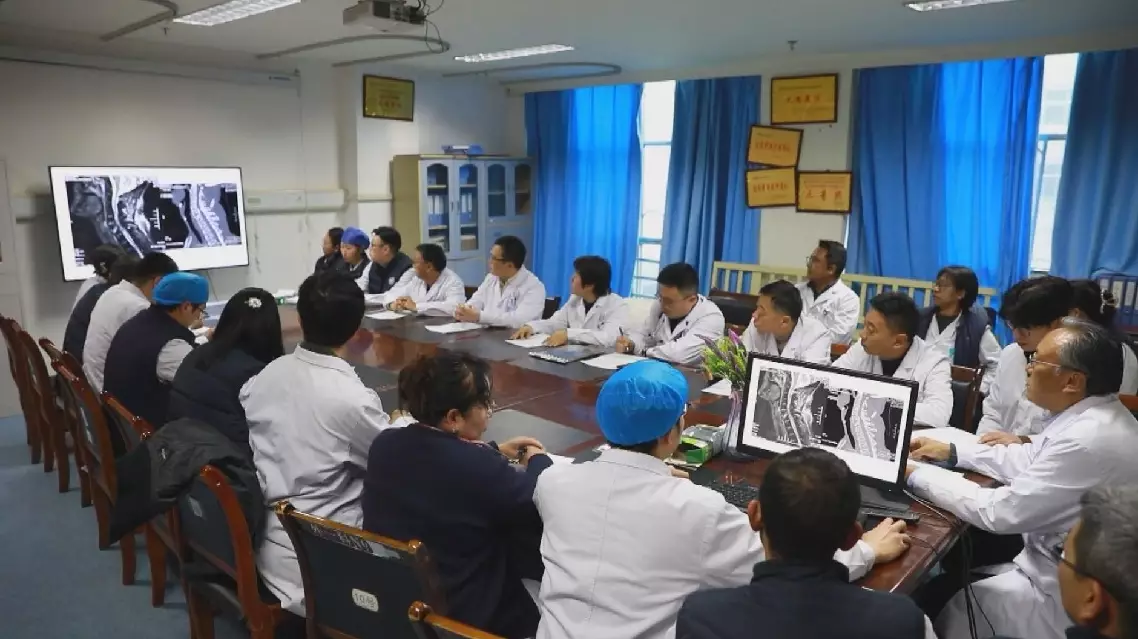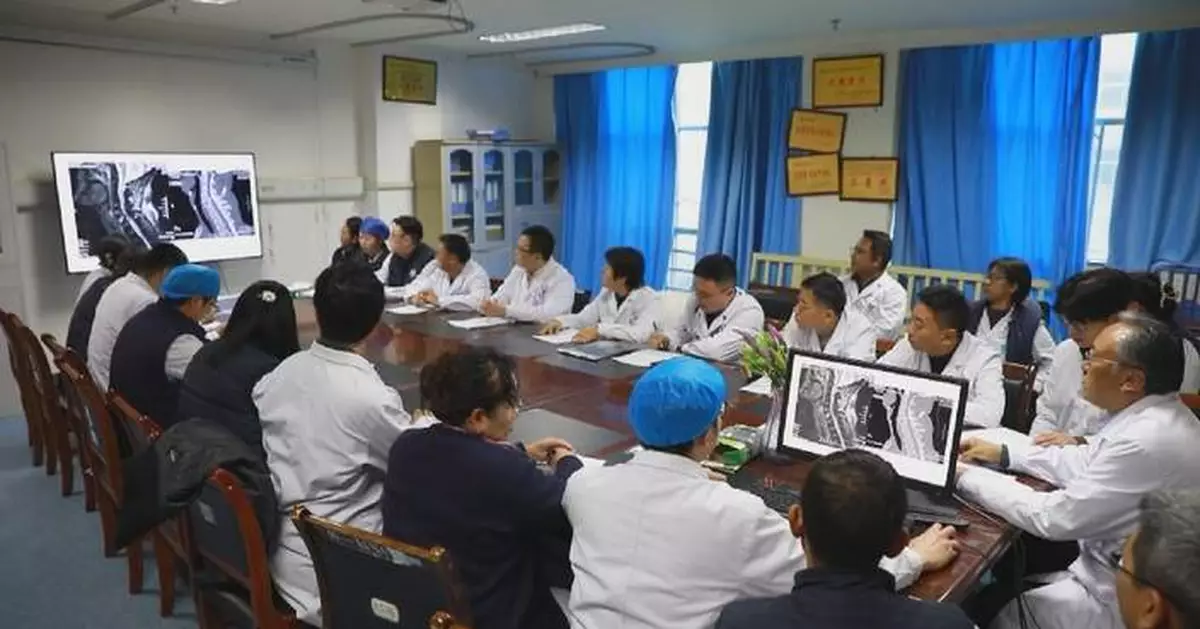Three critically-injured victims of Tuesday's deadly earthquake in a remote county of southwest China's Xizang Autonomous Region have been transferred to a leading hospital in the regional capital Lhasa City, where a team of specialists have been working to deliver the best possible care.
The 6.8-magnitude earthquake struck Dingri County in the city of Xigaze at 09:05 on Tuesday, causing at least 126 deaths and 188 injuries, while over 3,600 houses have collapsed.
Among the injured, three patients in critical conditions were transferred to the People's Hospital of Xizang. All three are elderly, with two suffering serious spinal injuries, as well as fractures and dislocations of the cervical vertebrae. Upon arrival, a multidisciplinary team of experts convened to assess the patients' conditions and formulate treatment plans.
"This critically-inured patient was transferred from quake-hit area with fractures and dislocation at the sixth and seventh cervical vertebrae. We gathered experts from various specialties, including respiratory, neurology, orthopedics, anesthesia, and imaging, as well as specialists from Peking University Health Science Center and Peking Union Medical College Hospital, to conduct an urgent consultation and evaluate the patient's condition to ensure the best possible outcome," said Kelsong Norbu, vice president of the hospital.
Currently, two of the patients have undergone surgery and are stable in the intensive care unit (ICU), while the third is receiving conservative treatment.
To manage the transfer and treatment of critically injured patients, the People's Hospital of Xizang has established emergency teams to assess patients prior to them reaching the hospital through setting up greater logistical support, and has taken steps to strengthen resources by ensuring sufficient emergency beds and activating a green channel to deliver rapid treatment.

Critically-injured quake victims receive specialist emergency care in Lhasa
The universal "reciprocal tariffs" imposed by the United States signals a decline in the U.S. economic dominance and dollar hegemony, as the country is attempting to extract excessive financial benefits from its trading partners, according to economists, who warn the Trump administration is playing a "dangerous game".
U.S. President Donald Trump last week signed an executive order on the so-called "reciprocal tariffs," imposing a 10-percent "minimum baseline tariff" before unveiling higher rates on certain trading partners. The policy sent shockwaves throughout the global economy and triggered panic on financial markets, with analysts warning of significant risks and dire economic consequences.
In an interview with the China Global Television Network (CGTN), Hong Hao, chief economist of the GROW Investment Group, a Shanghai-based hedge fund, said the tariffs reflect Trump's strategy to extract economic benefits from trading partners, particularly viewing China as a significant competitor. "Trump really believes that the trade terms with the trading partners have been unfair to the U.S., and as a result, the U.S. manufacturing sector has been hollowed out. Therefore, the U.S. is paying an excessive price for globalization, and now, it's time to pay back. I think, from this angle, he is trying to extract economic rent from its trading partners, and also he is trying to see China as one of the major U.S. rivals at this juncture. So, I think, as a result, he is playing a very dangerous game. And, as you can see, it's political theater in the sense that he is trying to dramatize the extreme pressure, so that he can get excessive rent from the opponent," he said
Trump's unilateral imposition of tariffs has eroded global confidence in the U.S. and its dollar's status, leading many to state that the American hegemony may not persist, according to Josef Gregory Mahoney, a professor of politics and international relations at East China Normal University.
"The U.S. economy is at an inflection point. There is a moment where the previous strategies being used to sustain American hegemony were no longer working. And, it's only a matter of time before the U.S. position erodes, given the fact that it's been a house of cards built on the dollar supremacy. And a lot of people don't see that as having a brighter future. This has moved past the theater stage and has moved really directly into one in which no one really has confidence in the U.S. anymore. No one has confidence in the dollar. No one has confidence in the U.S. being committed to the multilateral system, to global trade and so forth and so on," he said.

Trump playing "dangerous game" as tariff measures signal decline in U.S. dollar hegemony: economists






















































